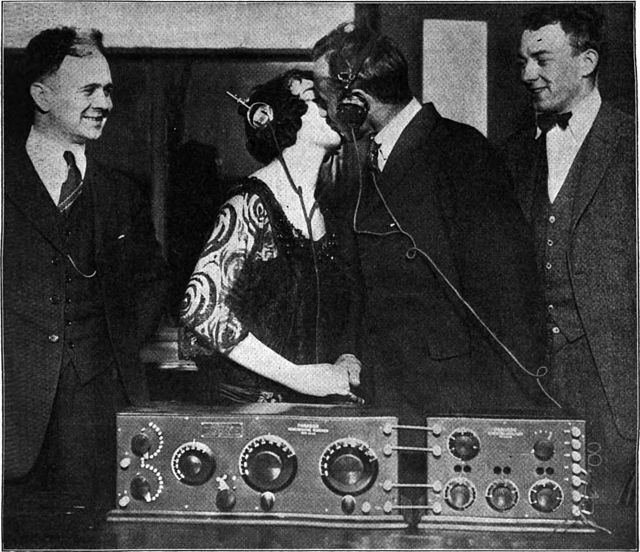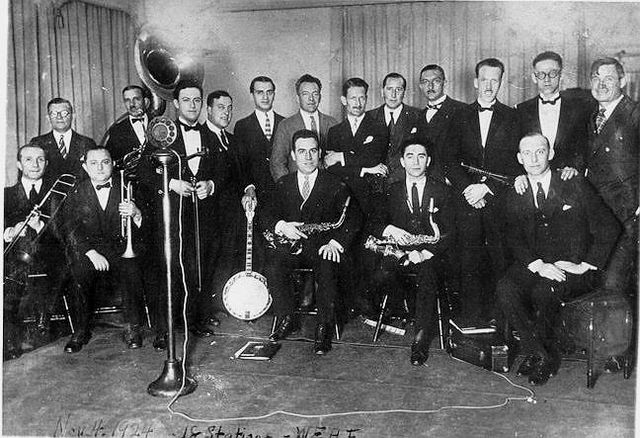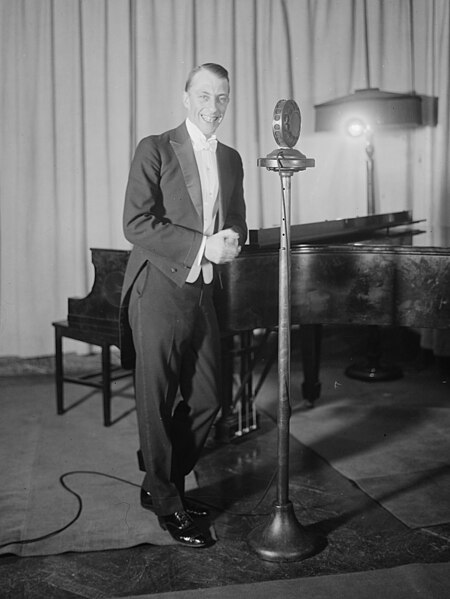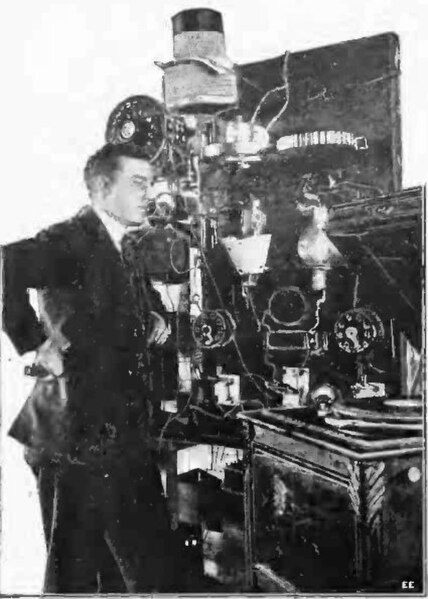WFAN is a commercial radio station licensed to New York, New York, carrying a sports radio format known as "Sports Radio 66 AM and 101.9 FM" or "The Fan". Owned by Audacy, Inc., the station serves the New York metropolitan area while its 50,000-watt clear channel signal can be heard at night throughout much of the eastern United States and Canada. WFAN's studios are located in the Hudson Square neighborhood of lower Manhattan and its transmitter is located on High Island in the Bronx. In addition to a standard analog transmission, WFAN is simulcast over WFAN-FM, and is available online via Audacy.
Helen Hahn in the WEAF studio, 1922.
WEAF broadcasting Margaret Girstner and Joseph Woorm's wedding, 1923.
The Eveready Hour's election night broadcast from WEAF to 18 stations on November 4, 1924: Will Rogers (far right), Art Gillham, Wendell Hall, Carson Robison, Eveready Quartet, Graham McNamee and the Waldorf-Astoria Dance Orchestra.
Graham McNamee in the WEAF studio, 1925.
AM broadcasting is radio broadcasting using amplitude modulation (AM) transmissions. It was the first method developed for making audio radio transmissions, and is still used worldwide, primarily for medium wave transmissions, but also on the longwave and shortwave radio bands.
Lee de Forest used an early vacuum-tube transmitter to broadcast returns for the Hughes-Wilson presidential election returns on November 7, 1916, over 2XG in New York City. Pictured is engineer Charles Logwood.
Nellie Melba making a broadcast over the Marconi Chelmsford Works radio station in England on 15 June 1920
Farmer listening to U.S. government weather and crop reports using a crystal radio in 1923. Public service government time, weather, and farm broadcasts were the first radio "broadcasts".
1938 Zenith Model 12-S vacuum-tube console radio, capable of picking up mediumwave and shortwave AM transmissions. "All Wave" receivers could also pick up the third AM band: longwave (LW).








